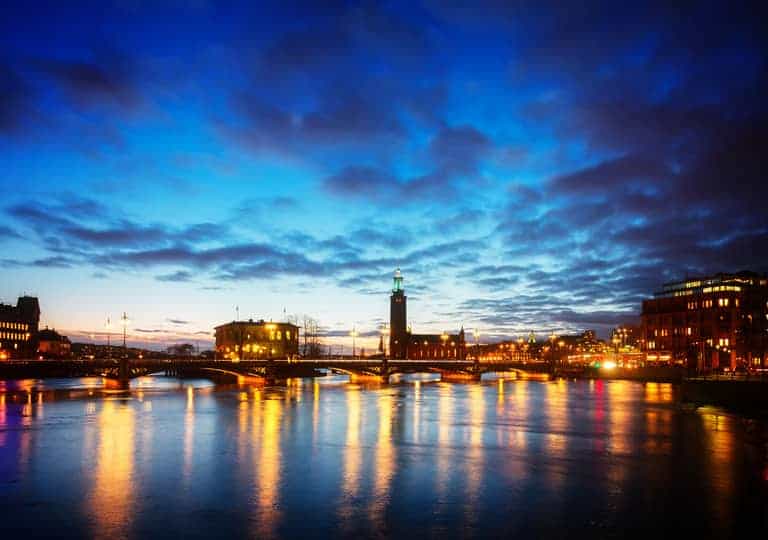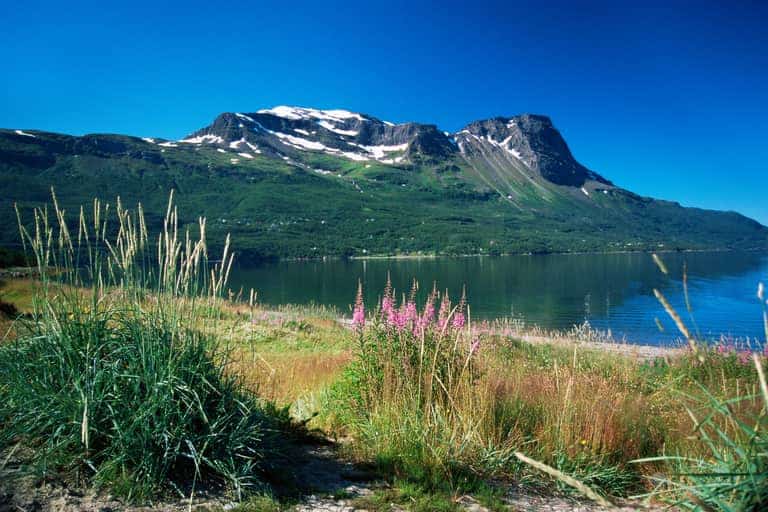Since the name, Scandinavia, refers to a location somewhere in the world, and most places in the world have a known date of origin, people naturally wonder when Scandinavia was founded.
Scandinavia does not have a founding date like other geographical locations do, such as countries, states, and provinces.
Scandinavia does not have a founding date because the name, which describes a group of countries in northern Europe, is an unofficial designation and not a formal title.
Scandinavian nations, like Denmark, Norway, and Sweden, have a unique, and overlapping history, and pinpointing the year or time period of their origin is possible.
But with regard to the place name “Scandinavia,” it is not possible to pinpoint a founding date, though it is possible to identify the etymology of the name. Keep reading to learn more.
Scandinavia is one of the most fascinating regions in the world. See the Scandinavian Peninsula: 16 Interesting Facts to learn more.

The origin of “Scandinavia”
For the sake of comparison, consider the region known as “the West” in the United States, also called the American Frontier.
Early in American history, the name—“the West”—referred to the area of the country west of the Mississippi River.
The name is a regional description of a certain geographical area, but it is not an official designation.
At different times, the “West” referred to various territories, but later in history, it referred to different states. Because of these reasons, it is not possible to pinpoint a founding date for the area.
Each separate location, whether it be an early territory or present-day state, has an origin story and it is possible to identify a founding date, but this is not possible for the region as a whole.
Likewise, Scandinavia is an unofficial regional name and it is not possible to pinpoint a founding date.
First use of the word Scandinavia
While Scandinavia is an unofficial regional name, so does not technically have a founding date, it is possible to identify when the word itself came into use, as a label for the countries of Northern Europe.
The name did not originate in northern Europe but was coined by those living close to the Mediterranean Sea.
Pliny the Elder (23-79 A.D.), a first-century Roman philosopher, teacher, and author, may have been the first to use the word Scandinavia to describe the area of Northern Europe.
At the least, Pliny’s writings contain the first known use of the word.
Pliny used the word Scandinavia in his epic 10-book history set about ancient history called Natural History that he wrote in 77 A.D.
In the work, Pliny describes reading and consulting thousands of books and hundreds of authors, but each individual fact he mentions does not have a unique citation like many modern history books do.
Whether Pliny coined the name Scandinavia himself or adopted it from someone else, cannot be known with certainty.
Some historians believe the name may provide insight into how Pliny, and others in the Roman world, viewed the northern area of Europe.
One theory about the Latin origin of the name is that the first part, “Scania,” likely means “danger” and the last half of the word, “avia,” likely means “island.” [1]
If this etymology, or word history, is accurate, the name may be a way to describe the perilous waters of Northern Europe.
For example, the North Sea lies between the Scandinavian Peninsula, home of Norway and Sweden, and Denmark to the south.
The Baltic Sea lies to the east of the peninsula on the Swedish side and the Norwegian Sea lies to the west of the peninsula on the Norwegian side.
Some historians note that in the first century, most Romans were focused on the areas surrounding the Mediterranean Sea, and had less interest, and less understanding, of other places such as Northern Europe.
While dangerous conditions sometimes exist in the waters of Northern Europe, they don’t always.
Pliny’s description may be an indication that first-century Rome had a lot to learn about the far north.
Some argue that such a description was based on extreme and unique stories, rather than the normal experience.
Their knowledge was sometimes based on anecdotes of travelers and explorers, and sometimes even rumors.
Historian Will Durant offers another theory for how the word “Scandinavia” was first used.
He holds that Pliny’s term initially referred to Sweden alone and then, over time, the name came to imply the region as a whole:
“Skane, the name given to Sweden by the elder Pliny, became in Latin Scandia, and begot the Scandinavia that now covers three nations of kindred blood and mutually intelligible speech.” [2]
“Scania” is also the name of the southernmost province of Sweden.
Countries like Denmark, Norway, and Sweden are sometimes referred to as Nordic, but what does that mean? See Is Scandinavia Nordic? to learn more.

Origin of common use of “Scandinavia”
Though theories of the origin of the name slightly differ, there is general agreement among historians that the name did not become a common term for the area until later.
European historians introduced (or re-introduced) the name Scandinavia in present-day English in the 18th century, likely influenced by Pliny’s description.
In the last few centuries, modern groups, inside and outside northern Europe, have used the term in various contexts.
Challenges with identifying a founding date: Pinpointing the starting point of a nation can be challenging. What exactly is considered the founding moment or event? A mere presence in the area?
A defeat of challengers and rivals or militarily defeating the people inhabiting the location previously? Or perhaps a declaration of independence?
Consider the United States, for instance. The traditional date of inception is July 4, 1776. However, the people who declared independence had already lived in the region for multiple generations.
And just because the declaration was declared on that date, that doesn’t mean complete autonomy occurred immediately.
In some cases, it may be more accurate to think of the time period when a country was founded.
In the case of Scandinavia, the best approach is likely to study the early history of each individual nation and then identify the key moments and events that led to their status as an autonomous country.
Norwegians, Danish, and Swedish people are fascinating, but they aren’t very many of them. See Why Is Scandinavia Less Populated? to learn more.
Origins of the names Norway, Sweden, and Denmark
One starting point is to understand how the countries got their names.
Durant explains that the forefathers of the modern-day inhabitants had German heritage. He says that in the 9th century A.D.:
“…the Northmen were Teutons [Germans] whose ancestors had moved up through Denmark…into Sweden and Norway, displacing a Celtic population that had displaced a Mongolian people akin to Laplanders and Eskimos.” [3]
He goes on to mention the origin of each country’s name:
“An early chieftain gave his name to Denmark – Dan’s march or province; the ancient tribe of Suiones, described by Tacitus [a first-century Roman historian] as dominating the great peninsula, left their name in Sweden (Sverige), and in many kings called Sweyn; Norway (Norge) was simply the northern way.” [3]
Tracing the founding of each country considered part of Scandinavia is the closest one can come to identifying a founding date for the collective group of nations.
The Origins of Scandinavia
Scandinavia has a rich and interesting history. The countries in the region have numerous commonalities, but key differences as well:
The region is located in northern Europe and the inhabitants possess similar culture, languages, and heritage to the ancient Germanic tribe.
They are descendants of the original occupants of the region. Scandinavia is used to refer to the three northern European kingdoms which are independent nations today.
The countries are Denmark, Norway, and Sweden.
There is some disagreement about whether or not every area in northern Europe is part of “Scandinavia”:
The islands of Salvabard and Jan Mayne which are part of the republic of Norway are not included to be a part of Scandinavia.
However, the Faroe Island and Danish overseas territories are considered to be a part of Scandinavia because of their historical associations with the Scandinavian countries. [4]
The English definition of Scandinavia is “A geographical region which is sometimes referred to as Scandinavian Peninsula.” Scandinavia can also be considered a subset of the Nordic region which is Norway, Finland, Denmark, Sweden, Iceland, and their associated territories. [5]
References:
[1] Source
[2] Will Durant, The Age of Faith, p. 502. The “three nations” Durant refers to are Norway, Sweden, and Denmark.
[3] Ibid.
[4] Source
[5] Ibid.
